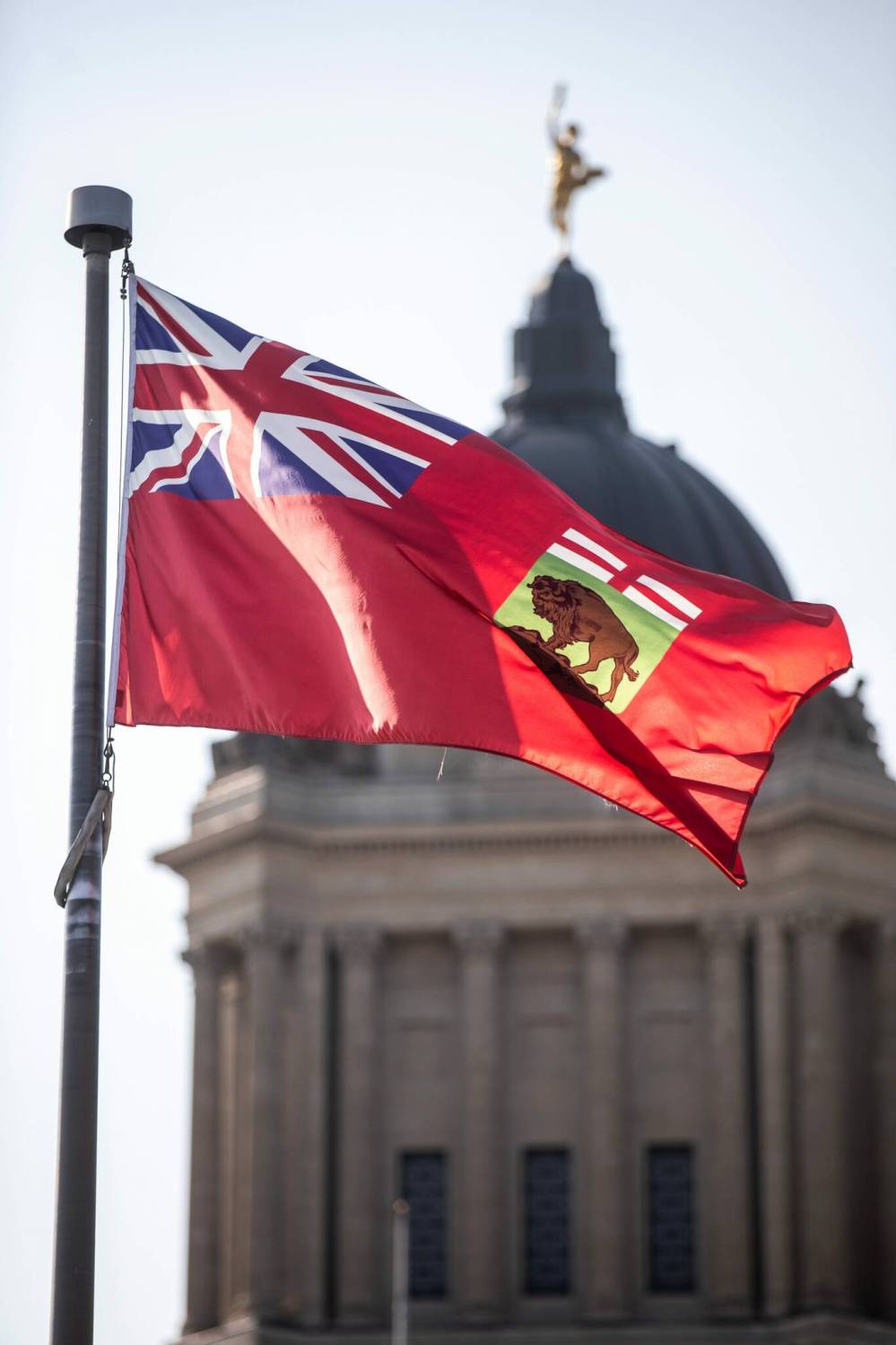It’s not a matter of if, but when, Manitoba will change its flag. It may not happen under the current NDP government, but the provincial symbol will be overhauled eventually.
Why? Because it’s inaccurate. It doesn’t tell the story of Manitoba’s heritage, how the province joined Canada in 1870, or how Indigenous people negotiated the terms of Manitoba’s entry into Confederation.
A new Probe Research poll found about half of Manitobans want to keep the provincial flag as is (51 per cent) and the other 49 per cent want it changed. Respondents were evenly split on whether it should better represent the province’s Indigenous population.

MIKAELA MACKENZIE / FREE PRESS FILES
Manitoba is the only province in Canada whose entry into the federation was led by Indigenous people. The provincial flag needs to change to accurately reflect that history, Tom Brodbeck writes.
Not surprisingly, the poll found younger Manitobans and people living in Winnipeg are more likely to want a new flag.
Manitoba is the only province in Canada whose entry into the federation was led by Indigenous people.
The Canadian government in 1869 sought to extend its jurisdiction into what is today Manitoba and Western Canada without consulting the people living there. Canada purchased what was then Rupert’s Land from the Hudson’s Bay Co. through tripartite negotiations in London, England with the British government. However, nobody thought to consult the people living in Rupert’s Land, who were primarily Métis and First Nations.
That forced Indigenous communities to push back and stand up for their rights through the Red River Resistance, led by the Métis and their leader Louis Riel, and through the numbered treaties, negotiated by First Nations.
The federal government didn’t even want Manitoba to join Canada as a province, at least not at first. Canada’s prime minister at the time, John A. Macdonald, wanted the West to join as a territory with an unelected government. The stated plan was for Manitoba to become a province at a later date.
That didn’t fly with Riel, who demanded Manitoba join Canada as a province, with the same privileges and rights as the four original provinces, including an elected legislative assembly. In fact, it was the Métis who created the settlement’s first elected body in 1870 (the Legislative Assembly of Assiniboia) before Manitoba became a province. That was dissolved when the new provincial legislative assembly was formed shortly after Manitoba became a province. However, it was the settlement’s first democratically elected legislature.
Around the same time, First Nations in what is today southern Manitoba negotiated the first numbered treaty with the Crown — Treaty 1 – in the summer of 1871 at Lower Fort Garry near St. Andrews. Manitoba’s entry into Canada was not complete until the numbered treaties were negotiated. The treaties set out the terms under which colonial settlers would be allowed to live alongside Indigenous people — to share the land with its original inhabitants in a spirit of peaceful coexistence and mutual respect. It’s one of the most important aspects of how Manitoba was created.
So were the negotiations in Ottawa in the spring of 1870, where three delegates chosen by the people from the Red River Settlement negotiated the terms of the Manitoba Act, passed by Parliament and eventually enshrined in the Constitution. The three delegates, led by St. Norbert parish priest Noël Joseph Ritchot, were chosen primarily by Métis people, who made up the vast majority of the approximately 12,000 people living in the Red River Settlement at the time.
First Nations leaders negotiated Treaty 2 almost immediately after Treaty 1 in what is today largely central Manitoba. Parts of Treaty 3, which covers mostly northwestern Ontario, includes a small part of Manitoba and was negotiated in 1873. Treaty 4, mostly in present-day Saskatchewan, also includes a small part of Manitoba. It was negotiated in 1874. And Treaty 5, primarily in northern Manitoba, was negotiated in 1875, with addendums added in subsequent years.
That’s Manitoba’s history, which was led by Indigenous people long before the territory filled up with colonial settlers.
Little, if any, of that is reflected in Manitoba’s flag, with the sole exception of the bison, which represents the main food source and livelihood of many Indigenous communities prior to Confederation.
Changing the flag to reflect Manitoba’s true heritage is an important part of reconciliation. It’s about accurately portraying the province’s real history, something that’s been hidden from most of us for generations.
It’s impossible to understand and find solutions to today’s social and economic challenges if we don’t know our history and the events that led us to where we are today.
The flag may just be a symbol but it’s an important one. It flies outside the Legislative Building and is displayed at important meetings and news conferences. It should accurately reflect the province’s heritage and the people who created Manitoba.
Right now, it doesn’t.
tom.brodbeck@freepress.mb.ca

Tom Brodbeck
Columnist
Tom Brodbeck is a columnist with the Free Press and has over 30 years experience in print media. He joined the Free Press in 2019. Born and raised in Montreal, Tom graduated from the University of Manitoba in 1993 with a Bachelor of Arts degree in economics and commerce. Read more about Tom.
Tom provides commentary and analysis on political and related issues at the municipal, provincial and federal level. His columns are built on research and coverage of local events. The Free Press’s editing team reviews Tom’s columns before they are posted online or published in print – part of the Free Press’s tradition, since 1872, of producing reliable independent journalism. Read more about Free Press’s history and mandate, and learn how our newsroom operates.
Our newsroom depends on a growing audience of readers to power our journalism. If you are not a paid reader, please consider becoming a subscriber.
Our newsroom depends on its audience of readers to power our journalism. Thank you for your support.